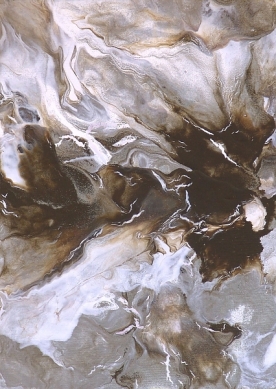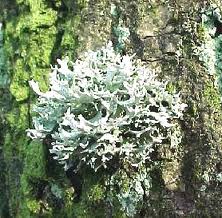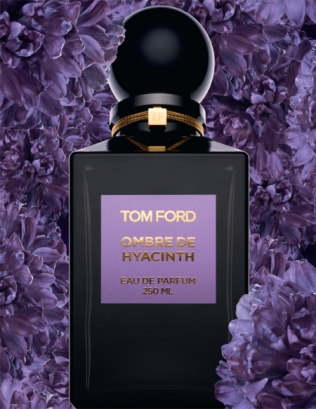The famous French author, Stendhal, once said “Beauty is nothing other than the promise of happiness.” I think that quote applies to perfume, too. Stendhal’s quote and his brilliant classic, Le Rouge et Le Noir (“The Red and The Black”) came to mind when I decided to review Tom Ford‘s Red and Black perfumes in his Private Blend collection: Jasmin Rouge & Black Violet. Good perfume can lead to happiness but, alas, only one of Tom Ford’s fragrances holds that promise.
BLACK VIOLET:
 Private Blend Black Violet was released in 2007, the creation of perfumer, Clement Gavarry, and is classified on Fragrantica as Chypre Floral. Personally, I would call it more an Aromatic Woody scent, for reasons that will soon become apparent. Tom Ford’s press release for the perfume, as quoted in part by Nordstrom, describes Black Violet and its notes as follows:
Private Blend Black Violet was released in 2007, the creation of perfumer, Clement Gavarry, and is classified on Fragrantica as Chypre Floral. Personally, I would call it more an Aromatic Woody scent, for reasons that will soon become apparent. Tom Ford’s press release for the perfume, as quoted in part by Nordstrom, describes Black Violet and its notes as follows:
Crisp citrus surrounds a modern pulpy fruit accord fused with black violets. Woody accents fold into oak moss, adding the universally comforting sensation of warmth.
Notes: lemon, lime, mandarin, orchid, violet, cedarwood, torchwood, vetiver, oakmoss.
Black Violet‘s opening phase is going to be a shock to anyone who expects the name to actually live up to its promise, because there is nary a violet in sight. Not one. Even more surprising, Black Violet starts as the most classic of men’s colognes. There is tart lemon juice, lime, and bergamot that is exactly like a man’s cologne or aftershave in its thinness and lightness.
Lurking below is vetiver and, even further below, is the faintest touch of some woody note. At first, it’s not spicy, peppered, or smoky, but just something vague. Ten minutes later, however, it starts to take on form and some weight, becoming a quiet dryness. If you’re wondering what the hell this has to do with violets, you’re not alone. There’s certainly none at the start. Same story with the mandarin notes which may have provided some beneficial juiciness or sweetness. There is also no oakmoss (the foundational element for a true “chypre”) that I can smell. While that is not surprising in this day and age of IFRA/EU restrictions on perfume ingredients (especially oakmoss), I don’t smell even a synthetic version in any concrete, substantial, distinctive form. If it’s there, it’s not detectable to my nose.
Thirty minutes into its development, Black Violet slowly becomes a dry citrus scent with vetiver and flickers of a lightly smoked wood accord. The lime, lemon and bergamot no longer feel individually distinct or separate; they’ve just morphed into an overall “citrus” note. The entire perfume feels incredibly thin in weight and low in sillage. I have the hardest time accepting that this is an “eau de parfum” — the second strongest concentration of fragrance after pure parfum — instead of eau de cologne, the very lightest concentration. In fact, I’ve smelled a number of men’s eau colognes that are significantly more potent than Black Violet.
Then, exactly at the one hour mark, Black Violet suddenly changes completely. The citrus men’s cologne aspect retreats and, in its place, is a dewy, earthy floral in the most muted, generalized, amorphous of ways. The floral tone is delicate, damp and green, never feeling quite like violets, but more like some random, delicate, purple flower mixed with what feels like a dash of lilac or hyacinth. It’s a ghostly note that pops up, only to dart away, before eventually returning to start the whole tease all over again. The lingering traces of citrus are similarly subtle, hiding in the background, too. More easily apparent is a cool, earthy note that is just like the dark, damp garden soil first thing in the morning. It’s not rooty, dirty, or dank, but lightly floral.
For the span of the second hour, Black Violet remains as a translucent mix of earthiness, dewy florals, and microscopic flickers of citrus — all muted, indistinct, and so close to the skin that it’s extremely hard to detect. It becomes softer and softer with every moment, turning floral muskiness atop some creamy, woody element tinged with a tiny drop of amber, before finally ending as nothing more than musky woodiness. All in all, Black Violet lasted 3 hours and 10 minutes on my skin with at least 90 minutes of that time being essentially so translucent that I thought it had vanished completely. When I say this perfume is thin in weight, hazy in feel, and close to the skin, I’m really not kidding.
It’s not just me and my perfume-consuming skin, either. The Non-Blonde had an extremely similar experience to mine, from the men’s cologne aspect right down to saying “I can barely smell it after three hours.” She’s much kinder and more generous to the perfume than I am — calling it an “abstract ‘smells good’ veil” at the end — but then, I think she’s probably a nicer, more diplomatic person as a whole. My problem with the scent is this: 1) that it is so vague in form and definition that it’s practically nebulous after the men’s cologne opening; 2) I was disappointed by the generic woodiness which followed; 3) the damp, abstract floral stage was pretty, but too translucent and brief to justify the price of the perfume; and 4) given all these issues, along with the microscopic sillage and terrible longevity, it feels completely outrageous to ask $205 for the smallest bottle of this supposed “eau de parfum.” (Yes, I tend to get peevish about perfume prices when the fragrance is so generically vague, fleeting, and sheer.) Even if you purchased Black Violet off eBay for a lower price than retail, I simply don’t think it’s all that special.
JASMIN ROUGE:
 A significantly better perfume, in my opinion, is Tom Ford‘s Jasmin Rouge which was released in 2011 as part of his Private Blend collection. (As a side note, Fragrantica lists it as being part of Tom Ford’s lower-level, cheaper Signature Collection, but that is not how Tom Ford categorizes it on his website.) Jasmin Rouge was created by Rodrigo Flores-Roux, and was the winner of the 2012 Fragrance Foundation FiFi Award for “Best New Fragrance for Women” in the “Speciality Luxe” category. It’s a sophisticated, refined scent that is beautiful in its opening, smells very expensive, and is definitely worth a sniff, even if its full development isn’t perfect enough to perhaps warrant a full bottle.
A significantly better perfume, in my opinion, is Tom Ford‘s Jasmin Rouge which was released in 2011 as part of his Private Blend collection. (As a side note, Fragrantica lists it as being part of Tom Ford’s lower-level, cheaper Signature Collection, but that is not how Tom Ford categorizes it on his website.) Jasmin Rouge was created by Rodrigo Flores-Roux, and was the winner of the 2012 Fragrance Foundation FiFi Award for “Best New Fragrance for Women” in the “Speciality Luxe” category. It’s a sophisticated, refined scent that is beautiful in its opening, smells very expensive, and is definitely worth a sniff, even if its full development isn’t perfect enough to perhaps warrant a full bottle.
Tom Ford describes Jasmin Rouge as follows:
Voluptuous. Sensuous. Audacious. Tom Ford Jasmin Rouge is a voluptuous, saturated, spiced floral. An unexpected blend of precious sambac jasmine sepals absolute, an ingredient never used before in perfumery with dusky clary sage and rich spices, it unveils a new facet of jasmine’s erotic decadence. Jasmin Rouge is as audacious as lacquered red lips. Its deep red bottle evokes lush and hedonistic glamour.
It’s a bit of hyperbole but, as one who love jasmine fragrances, I think it’s generally quite accurate, at least for Jasmin Rouge’s opening stage. There is definitely a voluptuous sensuality to the perfume; and its concentrated, saturated nature takes jasmine to both hedonist levels and very glamourous ones.
According to Fragrantica, the notes in Jasmin Rouge include:
Top notes: bergamot, mandarin, cinnamon, ginger, cardamom, black and white pepper.
Heart: Sambac jasmine, broom, neroli, ylang-ylang, clary sage.
Base: Mexican vanilla, labdanum, leather, wood and amber notes.
Despite this plethora of notes, Jasmin Rouge is a soliflore: a fragrance centered around one main note. Yes, there are varying nuances from start to finish, but it’s primarily a super-concentrated jasmine perfume in nature, so those who can’t stand the note or find that jasmine turns plastic-y on their skin should probably stop reading here.
Jasmin Rouge opens on my skin with seemingly every possible variation of the flower: green and fresh; spicy; indolic, lush and heady; fruity; and lightly musky. The very first minutes are filled with a surprising purple note that is exactly like very dark, Concord grapes. The note soon disappears, replaced by flickers of citrus and mandarin dancing about in the background. The heady, rich, velvety jasmine is the one, true star, however, evoking a summer’s evening when the night-blooming jasmine cast out their fragrant tendrils across the sky like sirens calling to Odysseus. It’s sweet but also airy, potently strongly, and spectacularly stunning.
Jasmin Rouge calls to mind what would be my favorite jasmine soliflore, if it actually lasted on my skin: Serge Lutens‘ À La Nuit. It is a perfume that many consider to be the gold standard for jasmine soliflores, and it’s truly an exquisite fragrance. Unfortunately, it has the lifespan of a squashed gnat on my skin. (Seriously. 30 minutes tops!) Like the Lutens, Jasmin Rouge is a super-charged, rich, heady jasmine fragrance. Unlike the Lutens, the opening of the Tom Ford perfume has beautiful touches of orange blossom, mandarin and slightly bitter, dry neroli underlying its star. I also detect something that feels like ylang-ylang, though it’s not listed in the notes. And, unlike the Lutens, Jasmin Rouge actually lasts on the skin.
In that lovely opening stage, the fruity-floral bouquet sits upon a base that is, at first, creamily sweet and daintily touched by a milky, light vanilla. Slowly, slowly, the base starts to turn drier, woodier, and spicier; it minimizes the fruited elements and helps prevent any excessive sweetness. So, too, does the slightly green feel of the perfume. It’s almost as if leaves have been brought in to keep the jasmine from turning ripe, over-blown, cloying, or with that feeling of decayed excess that truly indolic flowers (like jasmine, tuberose or gardenia) can sometimes project. Don’t get me wrong, Jasmin Rouge is indolic and heavy — almost boozy in its initial extremeness — but it’s also simultaneously green, fresh and light. It’s a marvelous tight-rope act, and I could not stop sniffing my arm.
Two hours into the perfume’s development, Jasmin Rouge starts to lose some of its flair. It’s now woodier, drier, lighter, and sits much closer to the skin. There is still a spicy green nuance to the flower, but much of the perfume’s depth (and most of its powerful projection) has dropped out. The citrus, mandarin, orange blossom, and neroli touches seem more nebulous; the perfume’s body seems less lushly opulent and juicy; and there is a slight (just slight) tinge of smokiness at the very edges. I’m not quite as obsessed with the scent now, though I suspect those who want a dry, less purely floral element to their fragrance may be happier.

Catherine Jeltes Painting, “Modern Brown Abstract Painting WinterScape.” Etsy Store, GalleryZooArt, linked within. (Click on photo.)
Jasmin Rouge’s drydown begins midway around the fifth hour, when the perfume quietly emits woody notes with touches of smoke, pepper and musk. The jasmine is no longer the dominant note; it feels just as green and spicy as before, but it’s sheer and muted. Jasmin Rouge is now more of a bland, abstract woody fragrance where the light, beige notes just happen to be infused with jasmine, rather than the other way around. In its dying moments, just over 8.25 hours in, Jasmin Rouge is simply an amorphous, vaguely ambered, woody scent. All in all, it has good longevity, especially for a soliflore. It has extremely intense sillage at first, but the projection starts to drop after the first hour and the perfume becomes a skin scent by the start of the third hour.
I liked Jasmin Noir a lot more than most of the critics and bloggers out there. Their main issue is with the bland final stage, and I agree with them to an extent. However, I don’t dismiss the perfume as readily as they do. Bois de Jasmin‘s summation pretty much encapsulates the overall perspective of the blogosphere: “Jasmin Rouge is simply an up-market version of a familiar crisp fruity floral. Though it is lovely, it does not offer any revelations.” I think the perfume is better than that. It smells rich, doesn’t smell cheap or synthetic, screams luxury, is both green and lush, and oozes sex appeal and sensuality. I haven’t found a ton of jasmine soliflores to do that — with the exception of the stunning À La Nuit (with its zero longevity on my skin). And I can’t get over how beautiful the green spiciness is! I do wish Jasmin Rouge had retained more of its juicy, opulent, heady beginning for longer (since I prefer my pure florals to remain as such), and I would have also preferred less woods, but all that is a matter of personal taste.
The real question is whether Jasmin Rouge is special enough for the cost. I can only say that I think it’s worth the cost more than most of the other pure florals I’ve tried from Tom Ford. (For example, I thought the Jardin Noir Collection was terribly over-priced for the scents in question. I couldn’t stand Ombre de Hyacinth, and I thought Café Rose was both cloying and exhausting.) In short, it’s all relative. I would absolutely wear Jasmin Rouge if a bottle fell into my lap, but would I actually buy it? I don’t know, especially as I have issues with Tom Ford’s retail prices. If it means anything, I definitely plan on looking on eBay, since Private Blend fragrances can be found there for much more reasonable rates.
The bottom line for Jasmin Rouge is that you have to really love jasmine to wear it. Those who don’t may find the perfume to be the equivalent of death by white flowers, especially if their skin chemistry tends to turn jasmine plastic-y or sour. Those who love the note will undoubtedly adore Jasmin Rouge’s opening, and the unusual spicy greenness underlying such a lush, concentrated, heady bouquet. I’m less certain as to how they’d feel about the drydown, however, or the perfume’s linearity — it all depends on one’s taste. But Jasmin Rouge is absolutely worth a test sniff, so skip the Black and go for the Red. If perfume is nothing other than the promise of happiness (to paraphrase Stendhal), then Jasmin Rouge’s opulently heady, spicy florals and very feminine, sensual, sophisticated, refined manner might possibly be your ticket there.

















